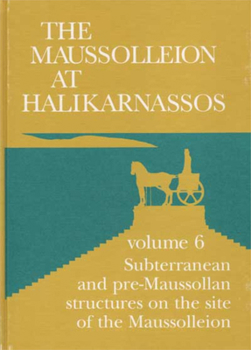The Maussolleion at Halikarnassos. Reports of the Danish Archaeological Expedition to Bodrum: 6. Subterranean and Pre-Maussollan Structures on the Sit
Volume 6 details Jan Zahle's investigations of subterranean structures close to the Maussolleion. Successive spoliations - including Newton's - have greatly muddled the archaeological record, and the Danish excavations uncovered evidence of another complication: plans for the site appear to have changed during construction, so what was originally intended as a modest extension of the existing structures evolved into a huge tomb on an immense terrace. His thorough sifting of evidence resolves many contradictions, though uncertainties remain.
Format:Hardcover
Language:English
ISBN:8788415163
ISBN13:9788788415162
Release Date:January 2005
Publisher:Aarhus University Press
Length:251 Pages
Weight:2.90 lbs.
Dimensions:0.8" x 8.3" x 11.7"
Customer Reviews
0 rating





